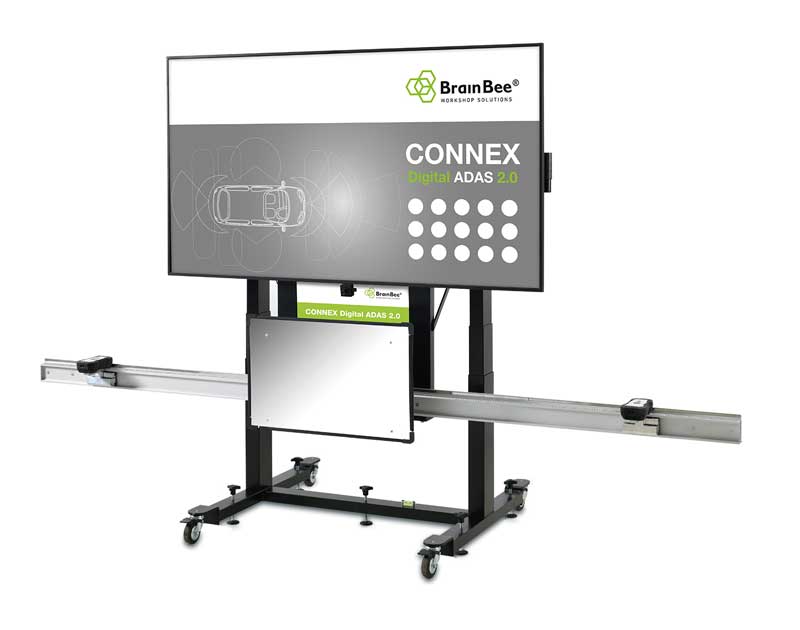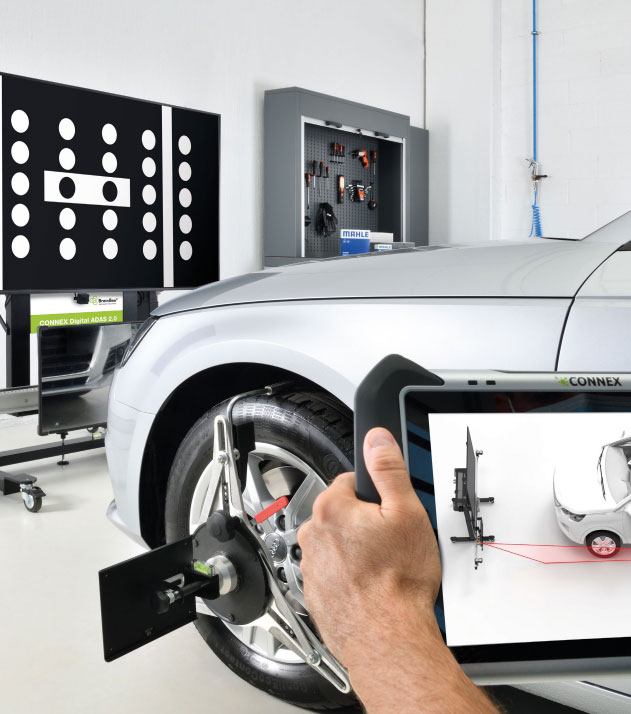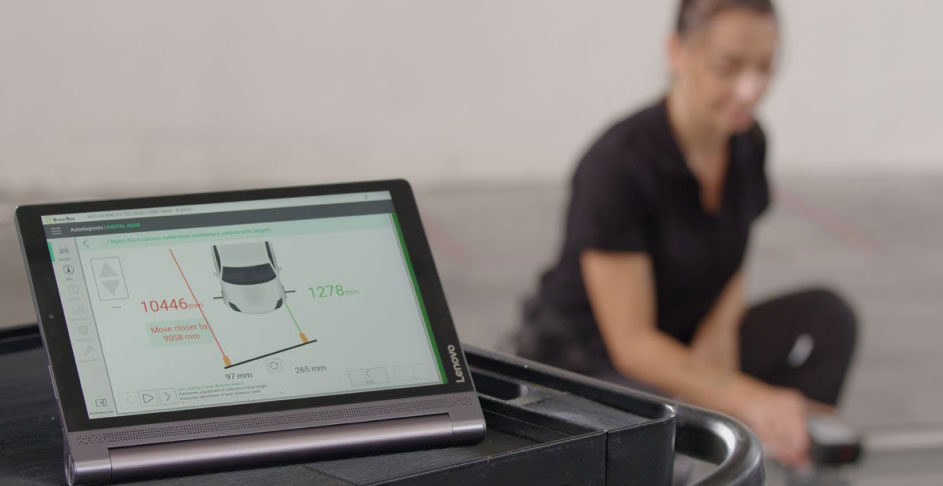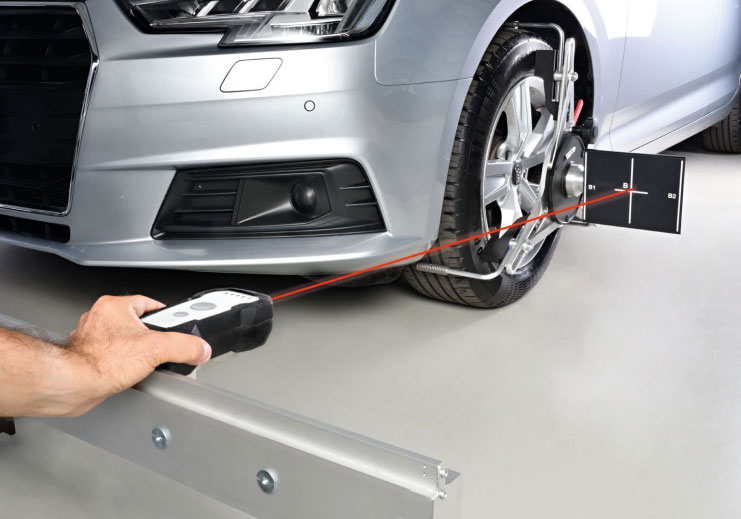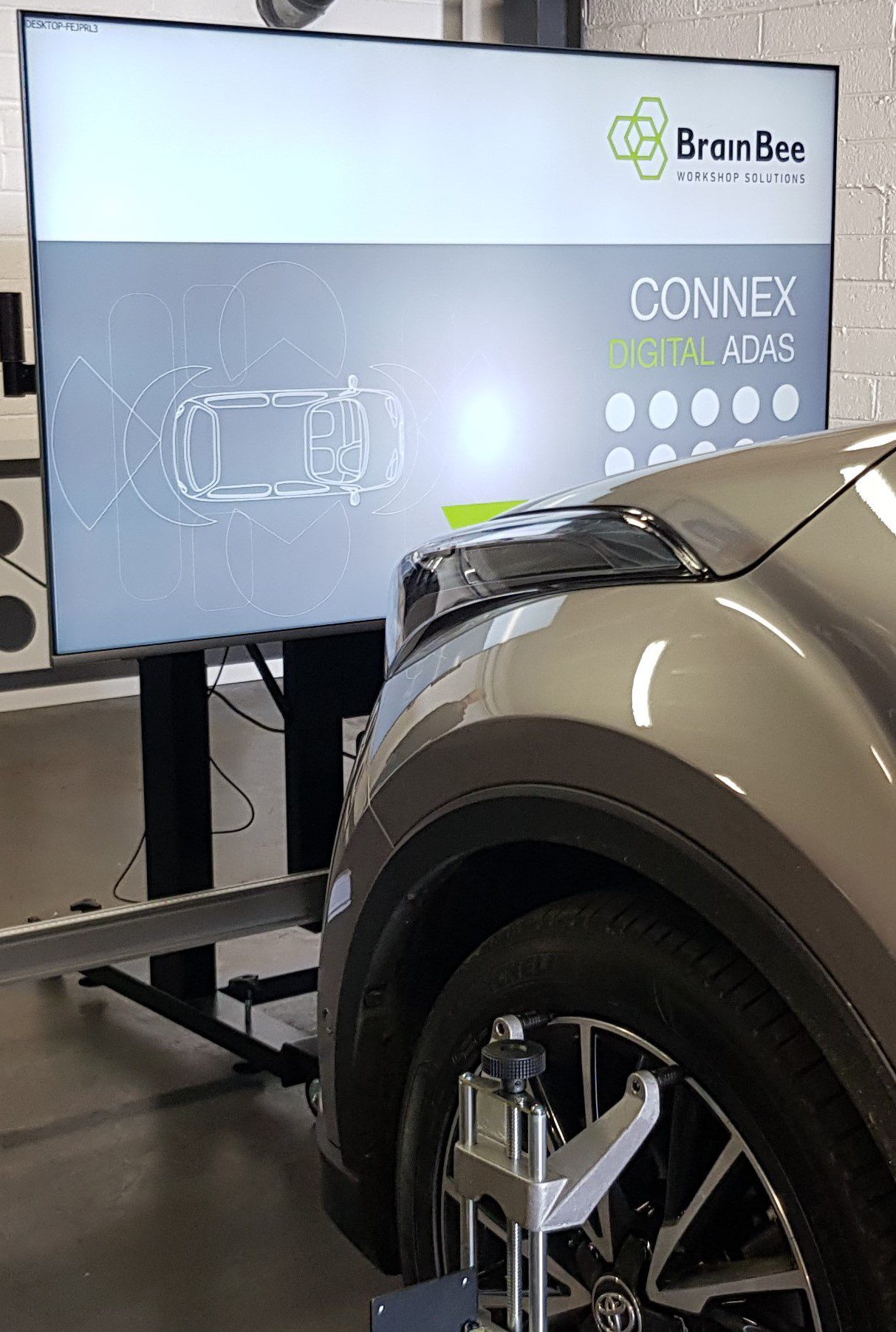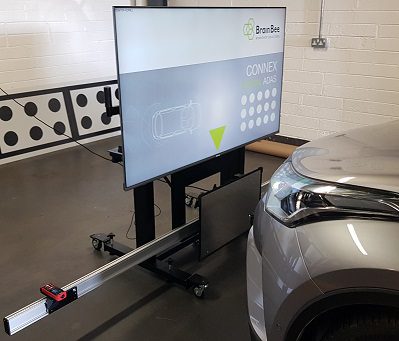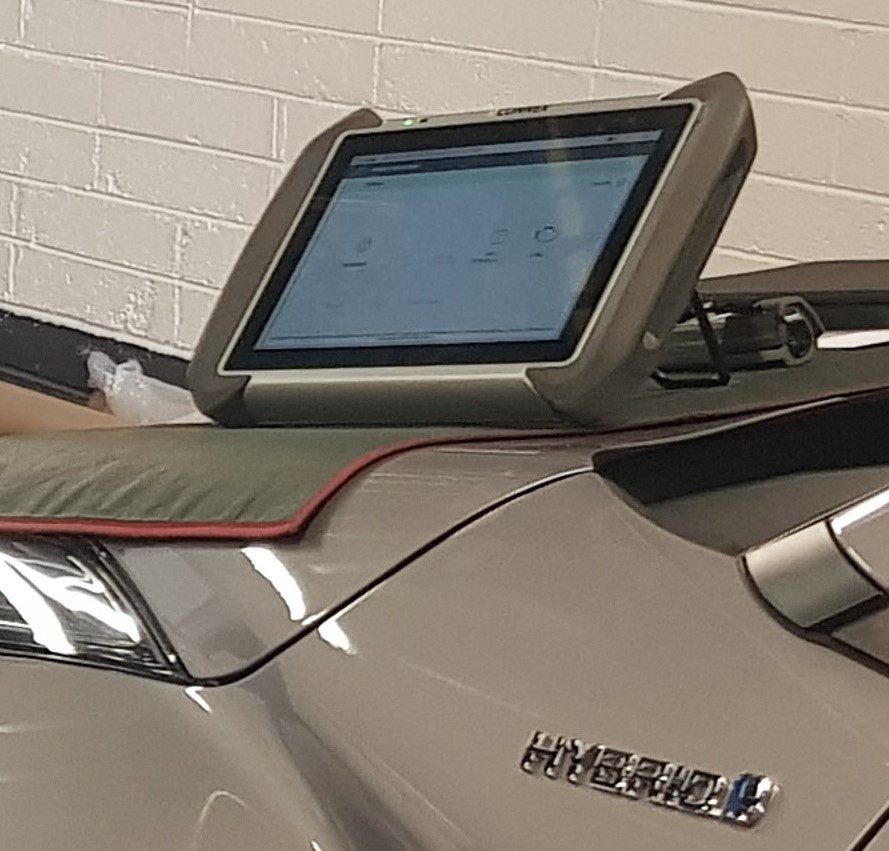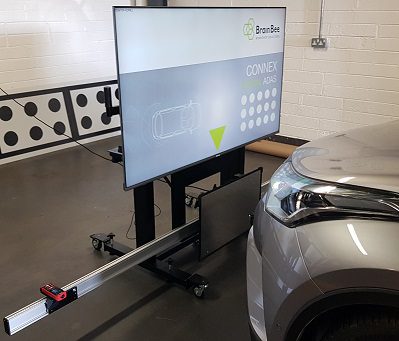
Advanced Driver Assistance Systems, or ADAS for short, is the collective name given to describe a growing range of vehicle features that help boost car and driver safety. ADAS checks things such as braking, speed and steering tasks, then either automatically takes action or sends an alert to the driver.
These systems include, but are not limited to, Autonomous Emergency Braking, Lane Departure Warning and Road Sign Detection, all of which use a series of cameras to detect the position of the vehicle and other road obstacles. ADAS systems require recalibration after certain vehicle maintenance and repairs are carried out in order to continue to work effectively.
ADAS Calibration at Hot Wheels Autos
Hot Wheels Autos are proud to be able to offer ADAS calibration service at our workshop, where our equipment is capable of calibrating vehicles fitted with LiDAR/ RADAR and Camera detection. If you require ADAS calibration, please contact us through our website www.hotwheelsautos.ie or contact our office number at 01-6519583
What is ADAS?
Advanced Driver Assistance Systems (ADAS) combine a multitude of individual sensors and software systems, partnered with steering, suspension, braking and powertrain systems to create a safety blanket around your vehicle.
ADAS equipped vehicles have long and short ranging detection systems by use of LiDAR (Light Detection and ranging) and RADAR (radio detection and ranging) as well as cameras so any object, moving or stationary, can be ‘seen’ by the vehicle as it travels along the road. Specialist software designed for these vehicles enables all these detection systems to be used seamlessly giving the driver assistance features that identify hazards on their journey, either by warning the driver or by taking automatic action to prevent an incident.
What are the different ADAS systems?
ADAS covers a wide range of driver assistance systems. Each type of ADAS may have a slightly different name depending on the manufacturer, but some of the key types include:
Adaptive Cruise Control
Despite cruise control being first introduced as early as the 1940’s it has seen some high-tech advantages in recent years. Adaptive Cruise Control (ACC) can sustain a set speed, like traditional cruise control, but can adjust this speed based on traffic movement, too. Cars fitted with ACC will use radar, or sometimes cameras, to detect obstacles and other vehicles nearby and automatically accelerate or decelerate accordingly.
Autonomous Emergency Braking
As with ACC, Autonomous Emergency Braking (AEB) works via sensors that scour the road ahead for obstacles. ACC and AEB will often share the same sensors, although some systems include cameras that can see cyclists and pedestrians at the edge of the road. The AEB system will then warn of the approaching hazard with dashboard lights and an alarm, before operating all-out braking force if you don’t react.
Forward Collision Warning
Like Autonomous Emergency Braking, Forward Collision Warning or FCW detect potential obstacles in the road ahead and alert you with a warning on the dashboard. Some FCW systems also assist the driver such as by boosting the braking input to increase the likelihood of avoiding an accident. The main difference between the two systems is that the driver has to take initial action and respond to the warning with FCW whereas AEB systems take action automatically.
Lane Departure Warning
This technology is already fitted in many newer vehicles. However, it is being further improved to make sure that cars aren’t steered out of the lane they’re in. In some situations, an alert (i.e. a pulse through the steering wheel) is given to the driver and in other instances; the vehicle will lightly steer to keep the car in the lane. This is known as Lane Keep Assist Systems or LKAS. This is especially useful on dual carriageways and motorways where driving can become monotonous.
Blind Spot Detection
Blind spot detection is already accessible in various forms. This can be as straightforward as a light on the wing mirror that shows that a vehicle is sitting in your blind spot. Other blind spot detection features stop you from driving into another lane if there’s a chance you’ll hit a vehicle you can’t see. This is especially beneficial for drivers with limited mobility who can’t physically turn around to check their blind spots.
Road Sign Detection
A road sign detection system has a forward-facing camera which searches the road ahead for road signs. This camera is hooked up to character recognition software which reads any changes illustrated by the sign. It then relays this on to the vehicle’s instrument panel. The data stays there until any changes occur.
So, if you’re uncertain of the speed limit, all you have to do is look at the information that the car observes. This might seem quite basic, but the technology might stop you from inadvertently speeding and encourages you to keep your eyes on the road.
Park Assist
This was once a feature only seen with ‘premium’ brand cars, but park assist, or automatic parking, is increasingly being made available to all manufacturers. We have all faced parking challenges, and parallel parking, in particular, can cause a lot of stress! Self-Parking technology goes one step ahead of technology such as parking sensors by discovering spaces, and then—with some help from the driver—parking your vehicle into that space for you.
What is ADAS Calibration and why is it important?
There are two main types of ADAS calibrations, they are Static Calibration and Dynamic Calibration.
Static ADAS calibrations can be completed within the workshop using specialist equipment and starts by establishing the vehicle thrust line by checking the wheel alignment and making any necessary adjustments. Special aiming targets are then positioned relative to the thrust vector of the vehicle. The vehicle’s sensors are then calibrated to the correct position using diagnostic tools. In some cases these vehicles may require a confirmatory road test or Dynamic follow-up calibration to ensure the sensors are operating correctly.

Dynamic ADAS calibrations are carried out on the road by trained technicians where the vehicle is driven, usually between 15-30 minutes, on relatively straight roads whilst maintaining an average speed until the vehicle calibration is complete.
“Whenever a sensor, or the vehicle parts it’s fitted to, is replaced there is a risk that the sensor may no longer be calibrated. That may lead to improper operation of the systems by the vehicle. This may be a minor irritation, such as the headlights no longer dipping when they ought, or the windscreen wipers failing to detect rain, through to inappropriate function – or lack of function – of safety-critical systems.” (The Institute of the Motor Industry)
Why Use ADAS?
Over the years, vehicles have been designed to be increasingly safe in the event of an accident. Passive safety features have been added, from seat belts and airbags able to protect passengers in the case of an accident, as well as active safety systems such as ABS and stability control helping to avoid incidents if the driver is alert.
Unfortunately, accidents do still occur and in most of these situations human error is to blame. A 2017 study by the Society for the Prevention of Accidents found that human error is a factor in 95% of all road accidents.
This is where ADAS can play a crucial role, not only can this offer convenience and added comfort for the driver but it can also assist the driver in certain situations to reduce fatigue and lower the risk of accidents that would occur through human error. It is important, however, to remember that these systems are in place to assist the driver, not to take control. It is vital as a driver that you keep your hands on the wheel and eyes on the road at all times.
What does ADAS mean for Car Maintenance?
The increase in complexity does come with additional maintenance for vehicles fitted with ADAS. The advanced systems use hardware such as radar, ultrasonic sensors, cameras or in some cases a combination, which will all require calibration after certain work or repairs have been performed. Examples of work that will require ADAS calibration include:
- Tracking/ Wheel Alignment
- Suspension work or component replacement
- Heavy wheel kerb damage
- Windscreen replacement
- Error code appears
It is also vital that whenever ADAS is calibrated a 4 wheel alignment must also be corrected if necessary. If the wheels aren’t aligned correctly then the vehicle will not be travelling where the electronics think it should be which could cause a fault light or even for the system to fail to operate when needed.
